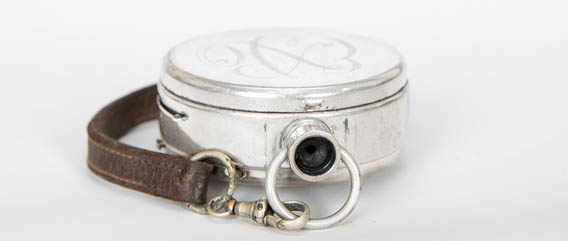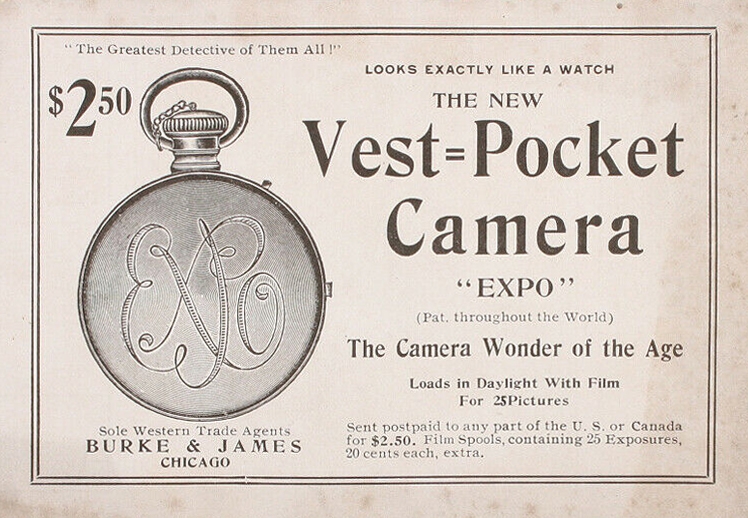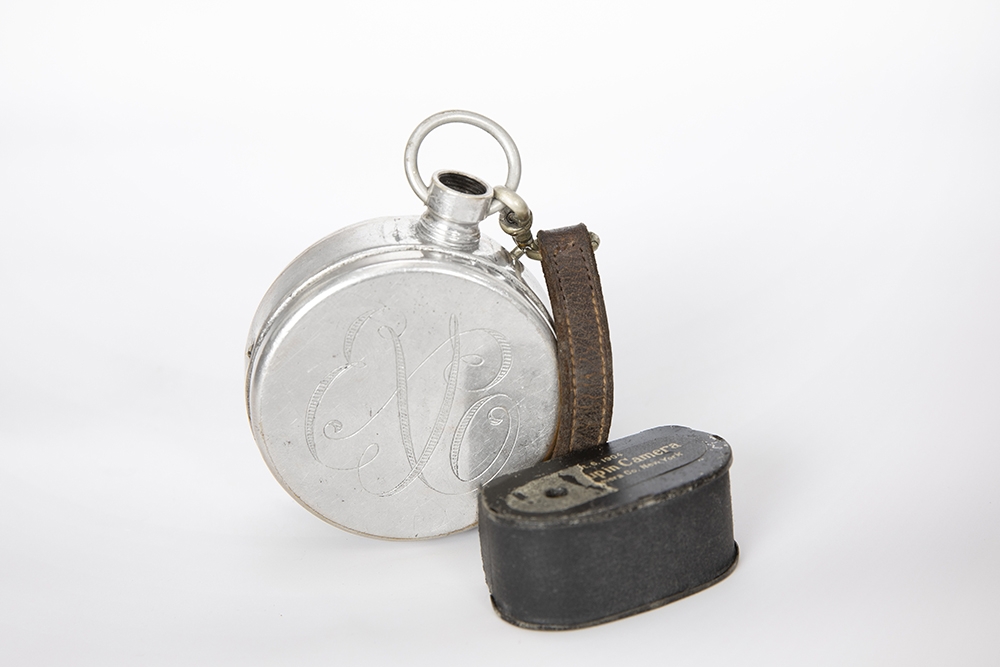
I thought I would share one of the more unique cameras in my collection. Perhaps one of the most famous spy cameras ever made, the Expo (Tica in Europe) Watch Camera was produced in America by Expo Camera Company of New York, also makers of the “Expo Police Camera” a pocket sized miniature detective box camera.
 The Expo Watch Camera is a sub-miniature camera shaped like a pocket watch, designed by Swedish engineer Magnus Niéll. The Camera is only 2 1/8 inches in diameter and fits in the palm of a hand. It does a pretty good job of resembling a pocket watch. Manufactured from 1905 to 1939, at a time when most men carried a watch, the Expo Watch Camera was the height of stealth, if not function. It would not have been hard to envision someone standing on a sidewalk, appearing to check the time, while actually taking pictures.
The Expo Watch Camera is a sub-miniature camera shaped like a pocket watch, designed by Swedish engineer Magnus Niéll. The Camera is only 2 1/8 inches in diameter and fits in the palm of a hand. It does a pretty good job of resembling a pocket watch. Manufactured from 1905 to 1939, at a time when most men carried a watch, the Expo Watch Camera was the height of stealth, if not function. It would not have been hard to envision someone standing on a sidewalk, appearing to check the time, while actually taking pictures.
 This particular camera was produced from 1905 to 1910, and features the Expo name in a stylized script to resemble an engraved monogram. In fact, the name was so stylized, it was soon changed in 1910 to a less stylized script that was a bit easier to read, and then a few years later the Expo name is in block letters. It took 25 exposures from a single drop-in roll film cassette. One significant feature of this camera, was that the film cartridge could be reloaded in full daylight.
This particular camera was produced from 1905 to 1910, and features the Expo name in a stylized script to resemble an engraved monogram. In fact, the name was so stylized, it was soon changed in 1910 to a less stylized script that was a bit easier to read, and then a few years later the Expo name is in block letters. It took 25 exposures from a single drop-in roll film cassette. One significant feature of this camera, was that the film cartridge could be reloaded in full daylight.
The lens is mounted in the stem of the watch body, and there would have been a lens cap (missing) that resembled the winder on the stem of an actual watch. The simple shutter mechanism consists of a 1/25 sec sliding plate. The lens had to be covered either by the lens cap or a finger when cocking the camera so as not to double expose the film.
Made By Expo Camera Company
New York.
Circ. 1905
Nickel plated on brass body.
2 1/8″ Diam. 7/8″ Wide
Fixed focus 25mm. 3 element Glass Lens
Spring Set, Single Speed Shutter.
25 – 5/8″ x 7/8″ Images On Expo Cassette Film
Weighs 2 3/4 Oz.
Photographer
John Baltz
 John is a seasoned professional with nearly 30 years in photography. A native to Northwest Arkansas, John’s first interest in photography began with collecting cameras as a child from antique markets around town. Later, John received a degree in Computer Science from the University of Arkansas. It is his strong knowledge in digital photography, along with a love for the the history of photography that provides for a unique sense of creativity driving many of his projects.
John is a seasoned professional with nearly 30 years in photography. A native to Northwest Arkansas, John’s first interest in photography began with collecting cameras as a child from antique markets around town. Later, John received a degree in Computer Science from the University of Arkansas. It is his strong knowledge in digital photography, along with a love for the the history of photography that provides for a unique sense of creativity driving many of his projects.

